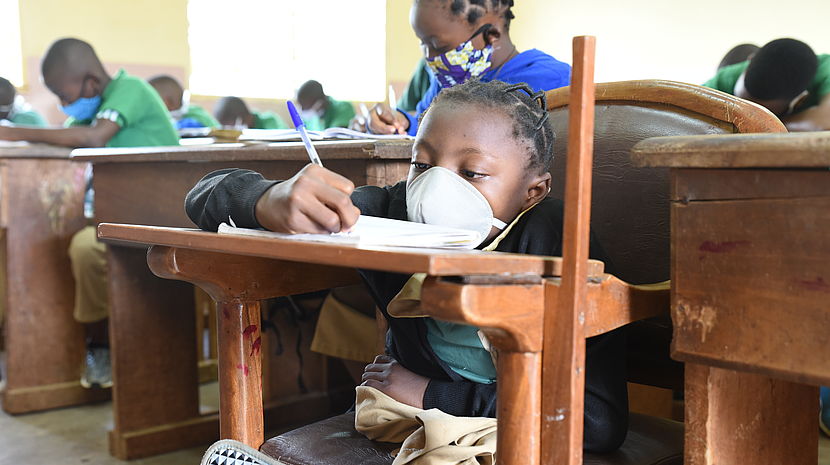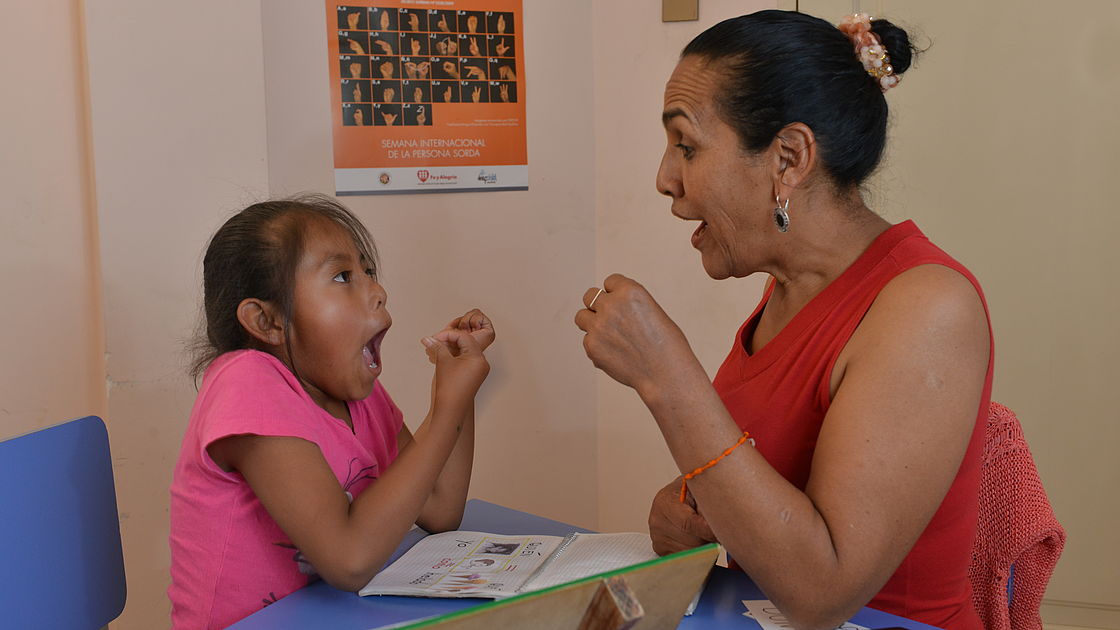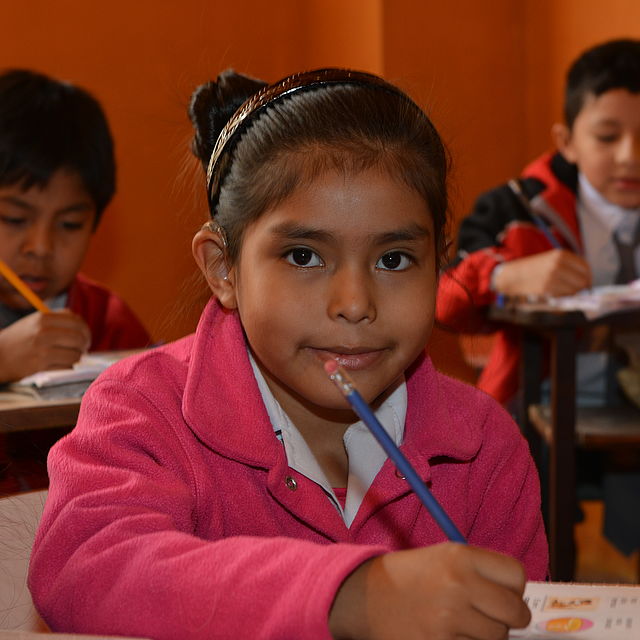Five Ways to Rethink Education Post Covid-19

Daphne is a student at PROMHANDICAM, an inclusive school run by CBM's partner in Cameroon. She loves school because she learns with her friends, all in the same class. For two months, all schools in the country were closed because of COVID-19.
©CBM
Education is a universal right, but it is not a reality for all. Learners with disabilities continue to be excluded from education and within education.
A new CBM report Learning from a Crisis shows that COVID -19 has further exposed the fragility of education systems around the globe and deepened inequalities in access to basic education for children with disabilities from the poorest families.
In many countries, children with disabilities often lack supportive infrastructure and support during closure. Children and learners with disabilities did not have access to nutritious food and therapeutic services. They could not access specialised teachers, assistive learning tools and technologies, and structured learning environments.
The United Nations Transforming Education Summit (TES) is an ideal moment in history to review and rethink inclusive education. Even before the Covid 19 pandemic, learners with disabilities were often excluded from efforts to provide inclusive and equitable quality education for all. The 240 million children with disabilities globally are among those less likely to attend or complete school and more likely to be illiterate than children without disabilities. This situation has been exacerbated by Covid-19.
CBM's Learning from a Crisis report draws on everything we and our partners have learned from our work on inclusive education in the early years of the pandemic. It includes practical examples from the work of dedicated staff, practitioners and volunteers around the world who have tried to support children with disabilities and their families, as well as links to useful resources and further reading.
We have an opportunity to rethink and refocus education to overcome the weaknesses in our current education systems so that we are better equipped to deal with the lingering effects of the pandemic and future crises. Here are some of the recommendations from the report.

Diana is deaf and has developmental disabilities. She is learning sign language and speaking at Altiora in La Paz, Bolivia, Latin America.
©CBM/Foto Backofen Mhm
1. Work with parents and caregivers
Parents and caregivers became key educators during the pandemic. In the future, curricula and extracurricular activities, face-to-face and remote support and supervision should be developed in close collaboration with families to fully understand the diverse needs of learners.
2. Consider accessibility from the beginning
The pandemic has highlighted that almost half of all learners worldwide face barriers to online learning and receive limited educational support at home. Taking an inclusive approach means that every child, whether they have a disability or not, can access and participate in remote learning. The principles of the Universal Design for Learning can provide learners with multiple opportunities to think, develop skills and grow while at home.
Education today is increasingly delivered using digital technology. Digital learning can be transformative, but it must be accessible, inclusive, equitable, effective, relevant and sustainable to ensure that no student is left behind. Low- and high-tech solutions are needed to ensure that all learners have access, regardless of where they live.
3. Reach out to the community
There is increasing evidence that school closures have exacerbated inequalities in education. Communication within the school community and back-to-school campaigns to build trust and support can target those children most at risk of dropping out of school permanently.
4. Provide psychosocial support
School closures can affect children's mental well-being and increase anxiety, depression and post-traumatic stress disorder. Ongoing psychosocial support will benefit all learners, including those with disabilities, as well as teachers, education staff, parents and caregivers. This could include providing information about services and facilities to support well-being or offering telephone counselling or advice services.
5. Build the capacity of teachers, parents and caregivers
When schools closed and learning moved off-site, teachers and education staff had to adapt quickly, often receiving little or no professional development support. Massive open online courses (MOOCs) can equip teachers with new skills and resources based on the experiences of other teachers. Additional support for mentoring, facilitation and parent-to-parent training will help parents and caregivers understand how to support their child's learning at home.

Find out more
Download the report for more ideas and links to useful resources: CBM Learning from a Crisis
Find out what homework we are setting for world leaders ahead of the Transforming Education Summit
Download CBM’s Inclusive Education Training Guide